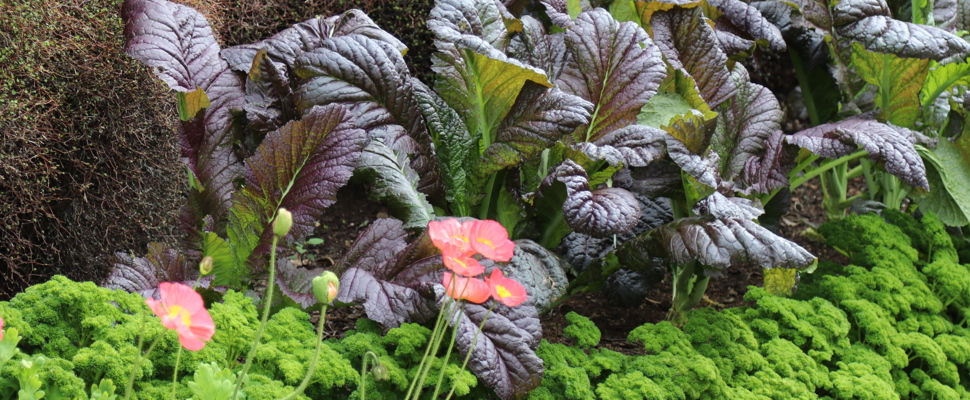
Companion planting
Companion planting optimises the benefits that accrue when plants grow in diverse communities. These benefits include attracting insects, and other organisms that contribute to plant health and reduced pest and disease build-up.
Companion planting is associated with fruit and vegetable growing. For example, it is a good idea to allow some plants (such as parsley and coriander) to remain in the garden even when no longer harvestable, as their flowers and seeds entice beneficial insects.
Benefits of companion planting
- A longer flowering season.
- Increased biodiversity, including beneficial insects, microorganisms and birds.
- Reduced spread of plant diseases and pests.
- Reduced use of chemicals.
- Soil protection (good plant cover provides a ‘living mulch’).
- Increased soil fertility when plants from the pea family fix atmospheric nitrogen and make the surplus available to nearby plants.
- Plants with deep tap-roots, such as comfrey (Symphytum), bring up minerals that are normally unavailable to shallow-rooting plants. The leaves are high in potassium and can be used as a mulch around vegetables or added to a compost heap.
For the flower garden
Some recommended companions for deciduous shrubs, such as roses:
Achillea, Argyranthemum, Crocus, Dahlia, Geranium, Geum, Helleborus, Hemerocallis, Iris, Leucanthemum, Lobelia, Nemesia, Nepeta, Nerine, Penstemon, Phlomis, Potentilla, Tulbaghia, Viola.
Some recommended companions for evergreen shrubs, such as camellias:
Alstroemeria, Amaryllis belladonna, Arisaema, Hemerocallis, Leucojum, Lilium, Liriope, Narcissus, Pulmonaria.